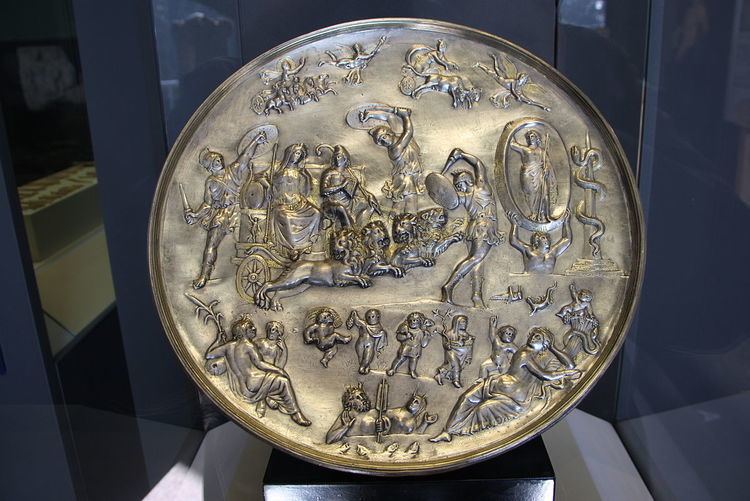 | ||
The Parabiago plate, also known as the Parabiago patera, is a circular silver plate depicting mythological figures. It was found in an ancient Roman cemetery at Parabiago, near Milan, in 1907. The plate depicts Cybele with her consort Attis in a "vast cosmic setting" amid "sun, moon, earth and sea, time and the seasons." At the time of its discovery, it was thought to have been used as a lid for a funerary amphora.
The plate is difficult to date. Earlier scholars tended to date it to the 2nd century AD, because of its classicizing style, but stylistic characteristics also permit a later date. Technical analyses, however, support a provenance in the 4th–5th centuries, even though it bears little stylistic resemblance to other silver pieces from that period.
Description
The plate weighs 3555 g and measures 390 mm in diameter. It has a foot-ring of 26 mm in height. The surface is worked with figures in high relief.
